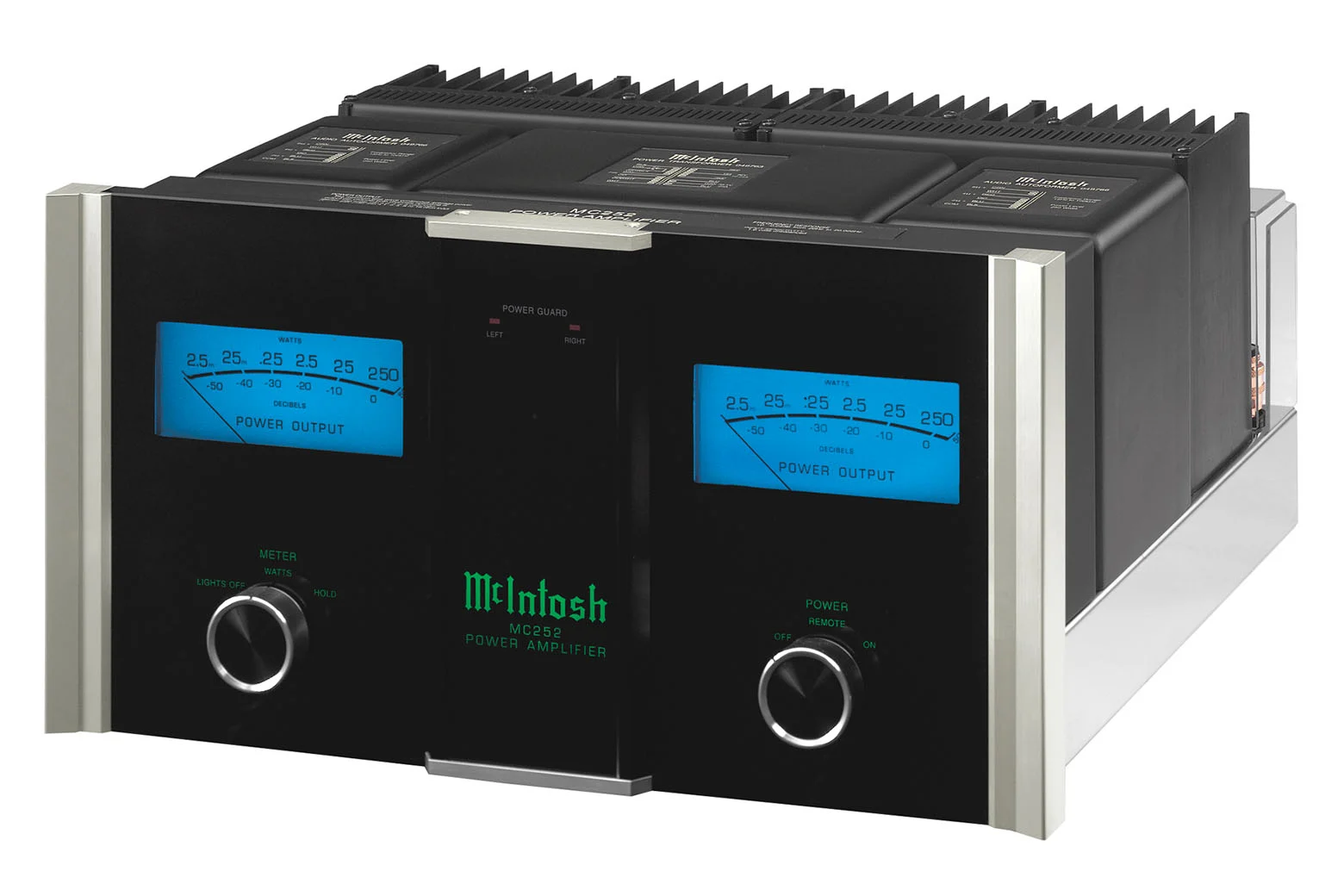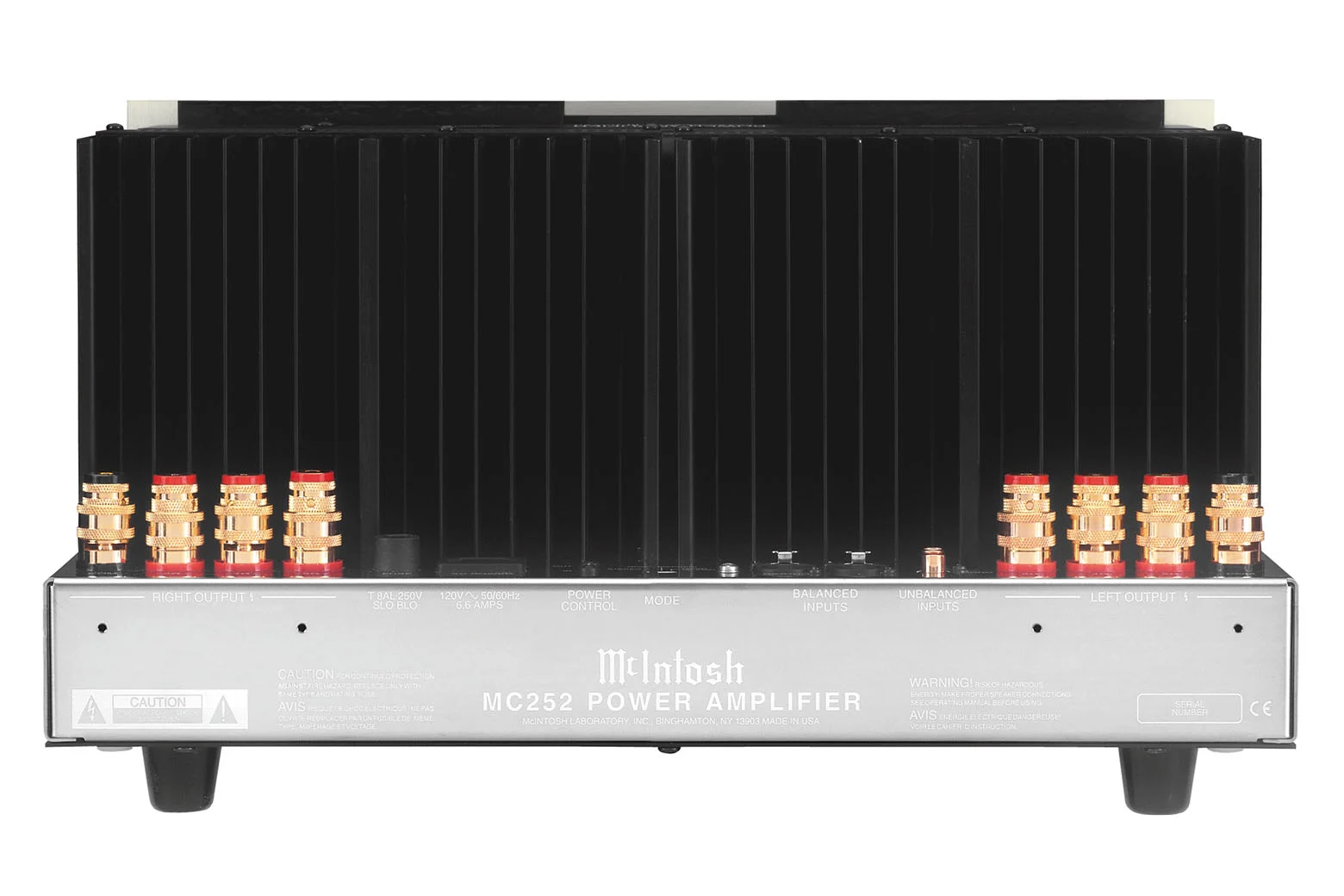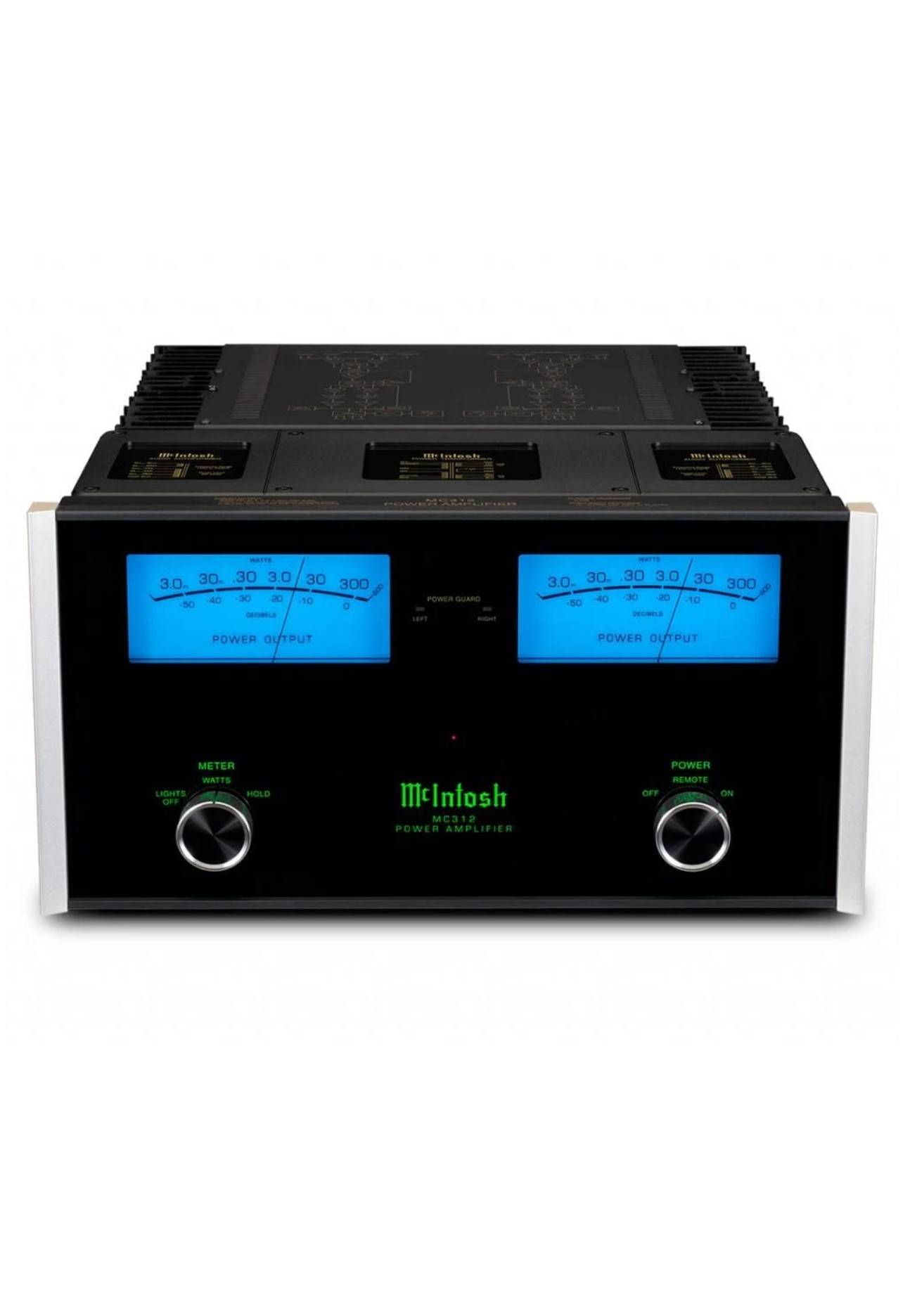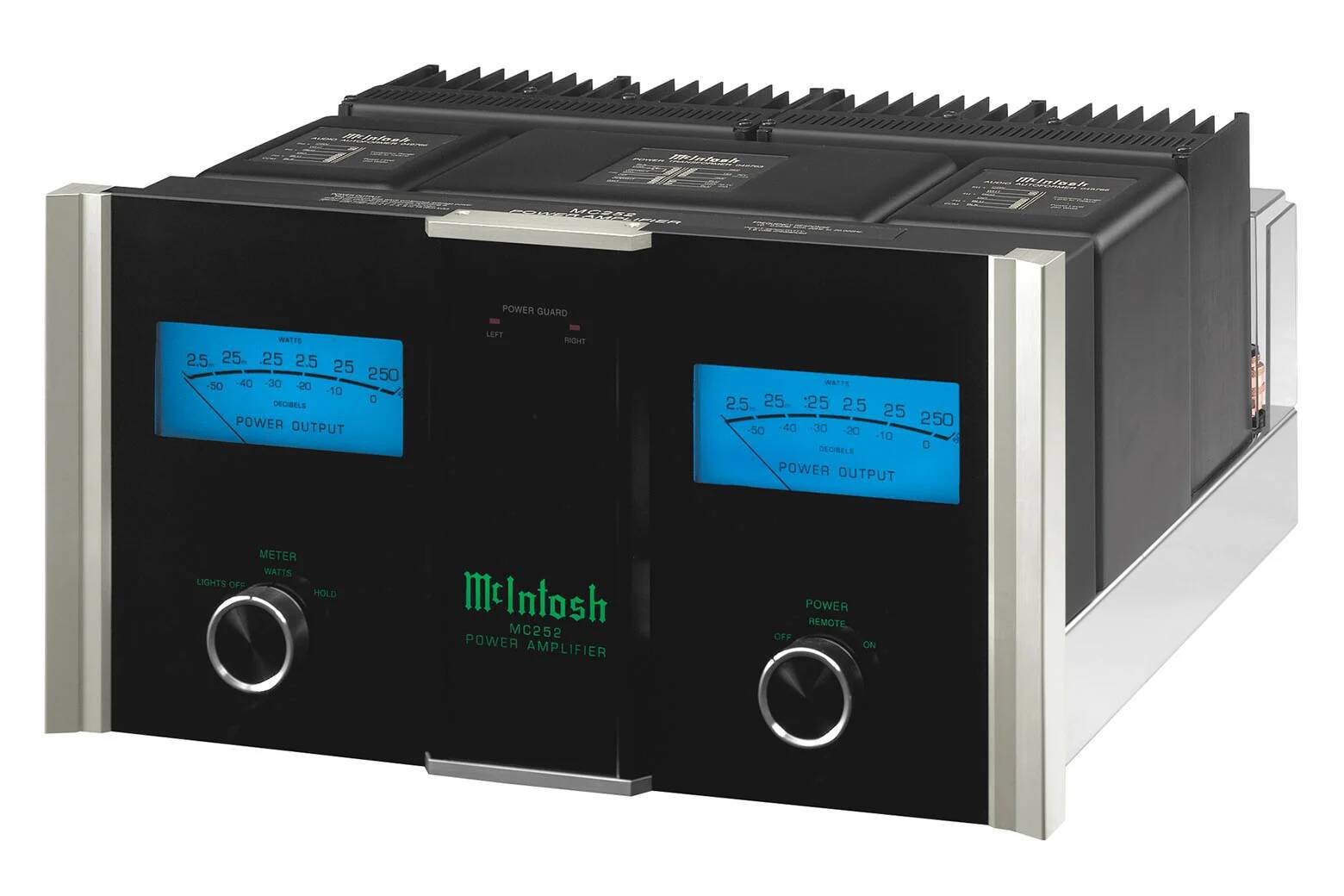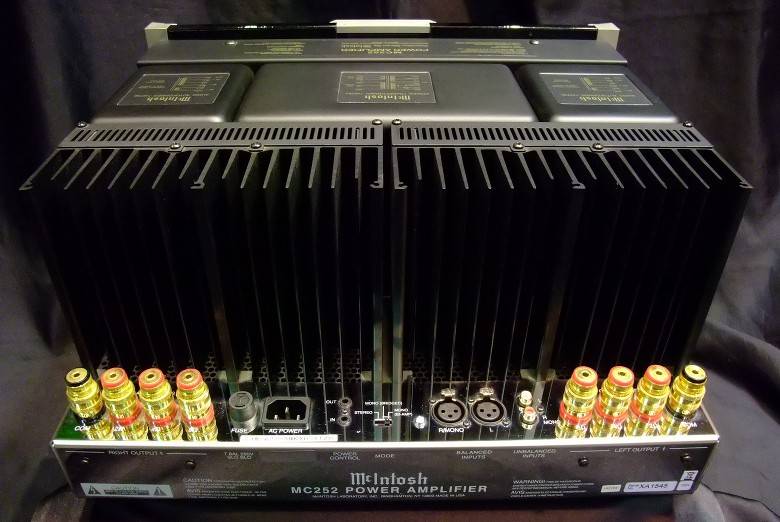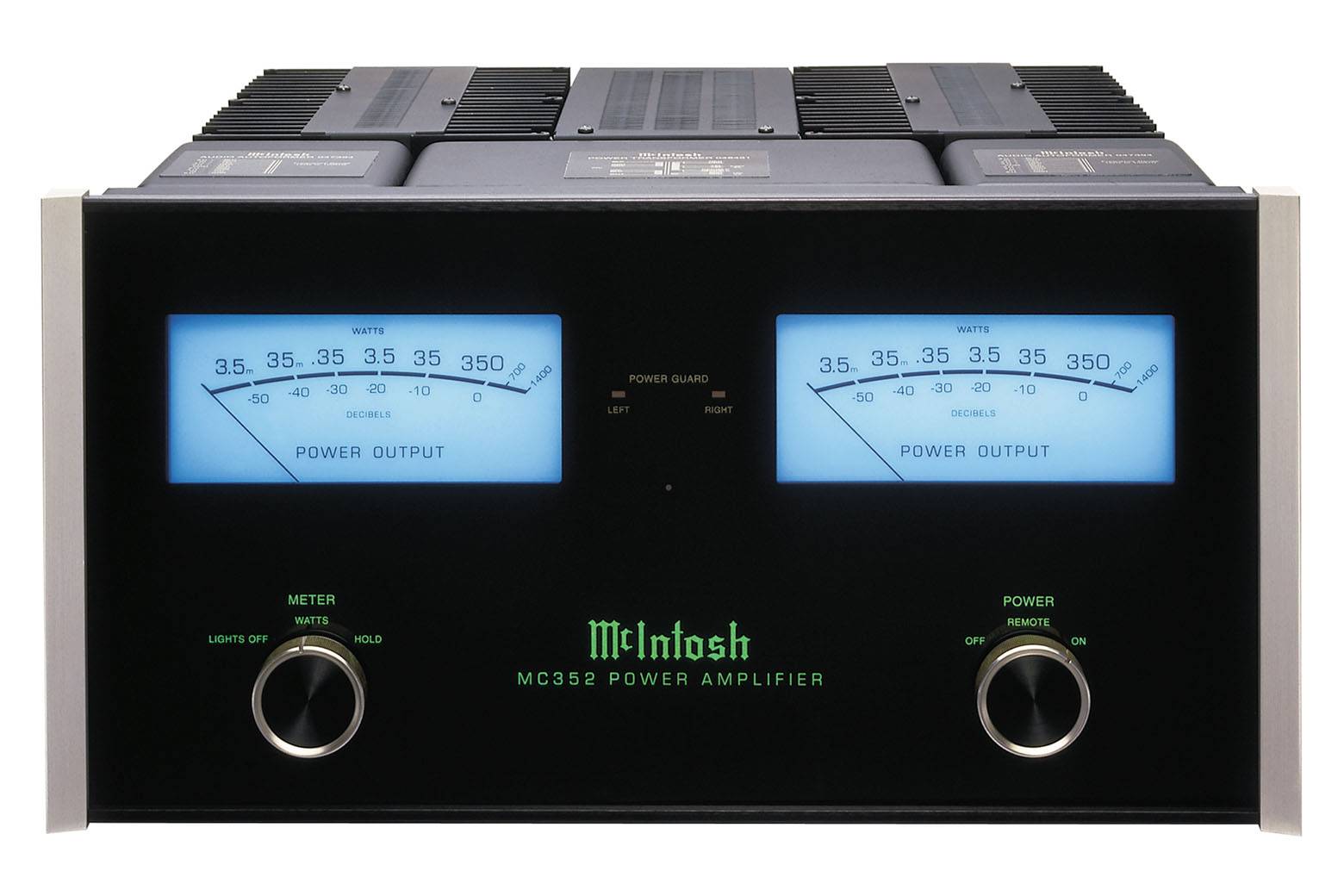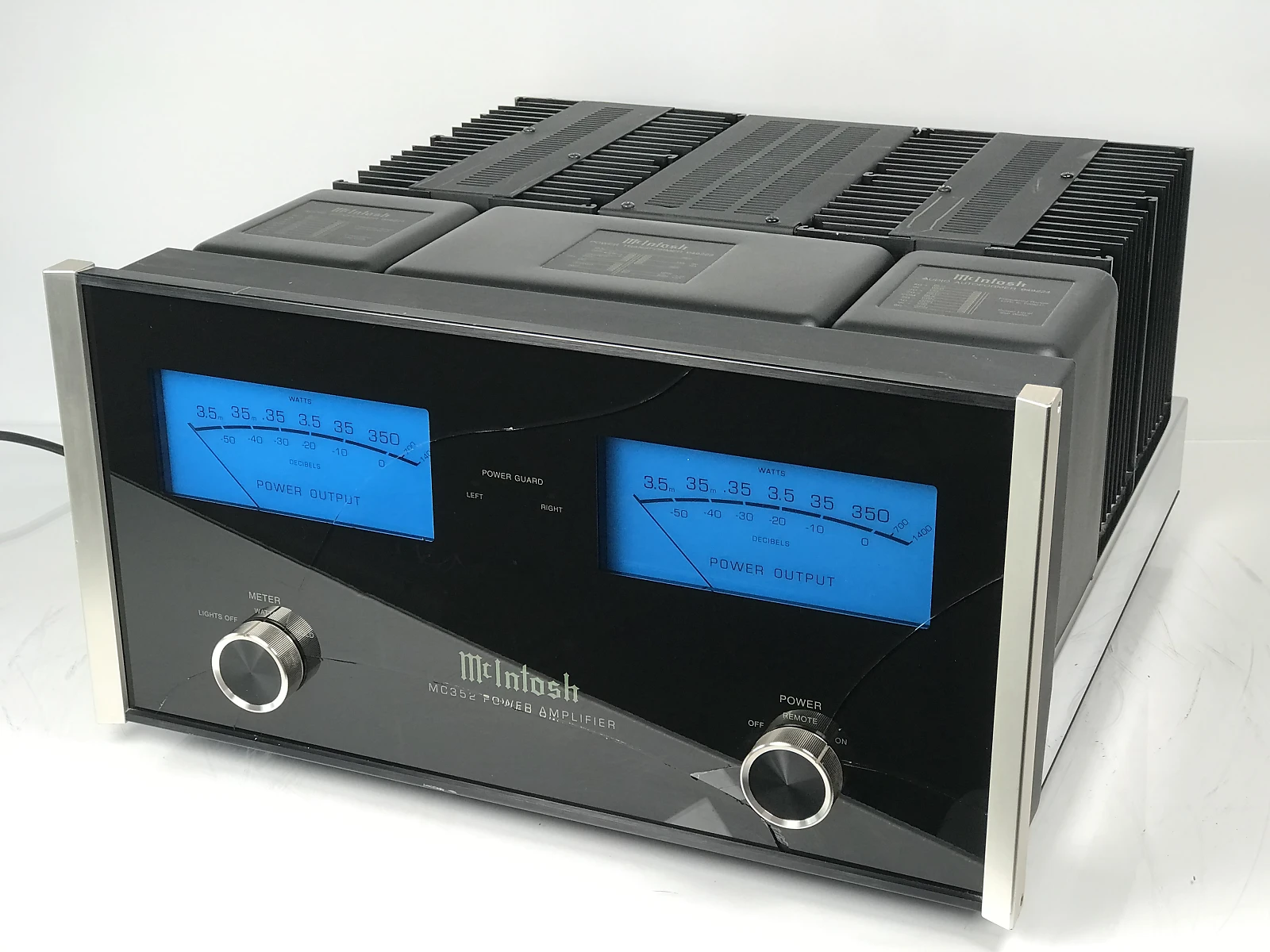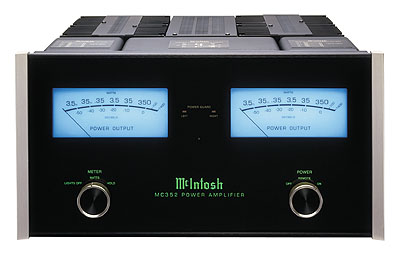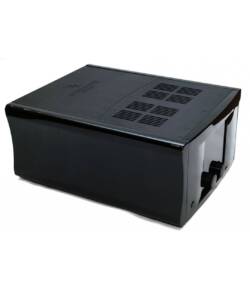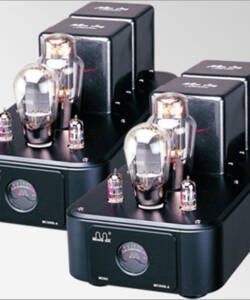McIntosh MC352 350×2 Power Amplifier
Original price was: R220,000.00.R88,000.00Current price is: R88,000.00.
Specifications
Power output: 350 watts per channel into 8Ω (stereo), 700 watts into 4Ω (mono)
Frequency response: 20Hz to 20kHz
Total harmonic distortion: 0.005%
Damping factor: 40
Input sensitivity: 1.9V
Signal to noise ratio: 116dB
Speaker load impedance: 2Ω to 8Ω
Dimensions: 225.8 x 445 x 533mm
Weight: 47.63kg
Downloads
Description
McIntosh MC352 Amplifiers
USER REVIEWS
|
[Jun 29, 2021]
stussy
Strength:Bathroom remodel can expertly put to reality your unique preference, taste, and vision.
Weakness:none so far
Purchased:
New |
|
[Jun 26, 2021]
dshute
Strength:The strengths of the MC352 are it’s very powerful, seemingly beyond it’s specified rating, and it’s easy to listen to. The MC352 replaced my old MC7270, which was also a great amplifier but I wanted more power and a balanced design. I’ve always enjoyed my McIntosh equipment and have never lost money on a single McIntosh component. Great investment.
Weakness:If it has a weakness I haven’t found it yet.
Price Paid:
3600.00 Purchased:
Used Model Year:
2001 |
|
[Nov 29, 2019]
GarageRat
Strength:These reviews here are not for the MA352 They are old reviews and are for other Mc equipment? Get rid of them and there is a picture on the Mc website. Post it. I have heard the MA 252 push Sonus Faber Adias. It was pretty awesome so the 5 stars. Those are top of the line speakers in any book. This also features ability to as 2 subs which is another major plus. I have not heard this model yet but will be purchasing it as soon as I get the Do Ray Me…. The MS 252 was a high and vast soundstage. As big as these speakers are it was above them. Pretty impressive for a little guy. It was in a room run by Pass which was amazing but of course, it was Pass Labs. If you don’t have the means for Pass this is an alternative you can easilyyyyy live with. This will do much better than it’s little brother/sister and boasts double the power which my Magico S3’s will love. The analogue over the digital read out is the deal for me. 5 band tone controls also a plus as I like a varied range of music. Wayyy Cool and what you would expect from Mc
Weakness:Negative: Does not have a MC phono stage, only a MM. Should just have none then and lower the price point. Buying at this level you should upgrade as you see fit. I have MC and MM carts on different tables and would like the plug and play option which at this price should be available. No balance control but I do not care about this as much as some do as the voice can be off center a little on some recordings. If you have a small prime seating area and are anal about it, I do understand their point of view.
Price Paid:
6500 Purchased:
New Model Year:
2019 |
|
[Aug 27, 2003]
Chris Rud
AudioPhile
Strength:Build quality, excellent factory support, lots of power, unique appearance, high resale value, excellent manual and packaging.
Weakness:Expensive, slightly warm sounding, unique appearance, large and heavy.
I never really considered myself a McIntosh fan, but this amplifier changed my attitude towards this virtual icon of the audio industry. It seems like there are two camps in regard to McIntosh equipment. One camp has an almost cult like devotion to anything that comes out of the factory. The other camp seems to dismiss anything made by McIntosh whether they have personally auditioned the equipment or not. In the past I would have fallen in the second camp, which I now realize was a mistake. The biggest attribute the MC 352 has to offer is that it’s just plain musical. Forget all the audiophile terms and extremes and just sit back and listen to this thing make beautiful music with a relaxed and perhaps somewhat warm presentation. There are many amps out there that do different things extremely well, but lack musicality. I have come to a point in my audio life where I want to turn on my gear dim the lights and just listen to music without having to critique every single aspect of the presentation; the MC 352 does just that to my ears. As I said above the MC 352 does err on the warmer side of neutral. Again I hate to discuss minute audiophile details too much, but if you’re using an overly warm or rolled off loudspeaker you might want to try it with the MC 352 before purchase. Equipment matching is always an issue, and in my opinion the amplifier/loudspeaker interface is the most important. The first time I heard the Mac was in an audio store with a pair of Thiel 3.6’s. To my ears the Thiel 3.6’s were always too bright in the treble and tended to become fatiguing over time. The first time I ever heard the 3.6’s sound good was when there were lashed up to the MC 352. Now I’m not saying that the 352 is going to roll off all the highs unless you have overly bright speakers. I am just saying that you should give it an audition with your speakers if they tend to err on the darker side in the treble. I have found the Mac to be an excellent match with Thiel, Dynaudio, and Dunlavy speakers. Another thing you get with this or any McIntosh purchase is peace of mind. Peace of mind in that you have a company that WILL stand behind the equipment they make whether you buy it used or new for as long as you own it. I like the fact that I can purchase McIntosh gear that is 10, 20 or 30 years old and still get parts and service. I also like that fact that the McIntosh look doesn’t change much over time. Let’s face it at the kind of money you have to spend on high end gear you should be able to expect it to look AND sound good. Most of the high-end companies out there tend to do complete facelifts every few years just to get their customers to trade in for the newest look and tiny circuit change. I kind of equate McIntosh gear to Harley’s, you can buy a nice Japanese sport bike that changes EVERY year, or you can buy a Harley once and it will always look like the current bikes available. So as you can read by my review I have become a McIntosh fan, I’ve even grown accustomed to the infamous McIntosh look and I’m very fond of it. The build quality on all the Mac gear I’ve seen and used is exemplary and so far bulletproof. There is also nothing wrong with owning gear that keeps its resale value just about forever. At some point I may wish to purchase McIntosh MC 1200’s or something with even more power, it’s nice to know that the MC 352 will still be very desirable on the used market which helps out on new gear purchases. Do yourself a favor and give the MC 352 a long audition, I think you’ll love it! Similar Products Used: Mark Levinson 333/336/33H, Audio Research VT-200, Classe’ Audio S-700, 25, 15, Krell KSA 200S, 300S |
|
[Jun 26, 2003]
Steve Huff
AudioPhile
Strength:Build, looks, SOUND, silky smooth, gobs of power, reliable, cool blue meters, and Mcintosh is a GREAT USA company that has been in business for over 50 years!
Weakness:0, ziltch, NOTHING. This was well worth the 43600 I paid for it. This will be my last amp I ever buy. If it ever dies I will buy another Mac.
WOW…after three years of swapping amps, preamps, speakers, cables and losing some big money doing it, I FINALLY found the exact sound i was looking for. I had to spend some bigger $$ to get here, but its better than constantly losing money buying and selling gear. I have some B&W Nautilus 602’s and I was usinga Cary V12i and SLP98p – The sound was thin, flat and not enjoyable. The B&W’s are hard to drive so its not the Carys fault, BUT I have also tried sunfire amps, pass labs, krell and others but when I put in this Mcintosh amp with the 2200 pre amp it was heaven. if you can get this amp used BUY IT. It has gobs of power, smooth sound, plenty O bass and a build quality like Ive never seen. The cool blue meters are awesome as well. Best amp Ive ever heard. Even (much) better than the Levinson I had. Everyone should try out Mcintosh. If they did, they would finally be happy! Similar Products Used: Levinson (WAY WAY over rated), Linn, Cary, Sunfire, Quicksilver Audio, Krell, Denon, Sonic Frontiers and many more. |
|
[May 28, 2003]
jomora
Casual Listener
Strength:Only the appearance.I do not doubt that this products can have good sound but without support I believe I will not discover it.
Weakness:BAD SUPPORT and NO WARRANTY until the moment.
I was acquired an amplifier McIntosh MC352 and an preamplifier C41 in September of the last year. The amplifier has a spot in the left measurer of watts (factory defect) to which I did not make case. When connecting them it disappointed the sound to me because it is listened to with little depth and glare. The needles of the measurers almost arrive at the mark of the 350 watts and more and the gain control of the amplifier I must raise it until half or more which seems to me excessive in an amplifier of this one power handling these speakers B&W DM604 that are in the the 200 category of watts. I have interconnected the amplifier and preamplifier with cables XLR in the balanced way as well as in way nonbalanced with coaxial cables without improving the sound. In one of the exits of the preamplifier I added to subwoofer Polk Audio of 180 watts and this one is listened too bad (distorted). I sent an email to the McIntosh company and as answer spoke me of METEX and they suggested me spoke to an expert in my city which I did but there was no error in the conections.I was pay much money by these products and waited for more of them as far as quality of sound and power. I sent emails to McIntosh and received the follow answer: “Did you listen to the system at your dealer before buying it? I am surprised at your description of the sound, what is your room like, very large? You say the powererd sub sounds bad? I dont see how the McIntosh could cause that. Did your dealer come out to your house and listen to the system? Chuck Hinton of McIntosh Tech Support” I Answer: I didn´t listen the system before buying it because I live in Monterrey,N.L. and the dealer is in Guadalajara,Jal. (dealer authorized in México) I contact the company by phone. I did listen one of this amplifiers at Marvin Electronics but I buyed the products in México for the lower price. The room is 4×4 meters. The powered subwoofer sounds distorted ( I connect it to de LISTEN outputs 1 or 2 at rear of the preamp.) The same subwoofer sounds good when I connect it to a Pioneer receiver of 110 watts/ch (to a sub out) My dealer don´t come to my house to listen to the system because are very far of my city (more than twelve hours of trip). They sent me the products by a shipping company. I don´t attempt to take any advantage and I was thinking too much time before to take the decision for ask your support. I ask in the previous message if some return of change could be handled because the amplifier have a spot in the left watts meter and what I go to do if I try to sell it. I´ll wait for your answer Gracias Dr. Jorge Mora I don´t received any answer.I sent new email: Mr.Chuck Hinton: I sent you the previous email at 21/ May / 03 . Please tell me what you think. I am connecting the subwoofer to a wrong site in the preamp.? What type of cables recommends and how must I to connect?(I did followed the instructions of the manuals) You tell me you are surprised at my description of the sound. Believe me I was too surprised because I don´t buy this products whit the intention of have problems. I´ll wait your answer, it is not my intention to be foolish or crude and beforehand I will thank for its answer. Jorge Mora And till the moment I don´t have an answer.BAD SUPPORT and NO WARRANTY. |
|
[Nov 25, 2002]
Dave Mamrak
AudioPhile
Strength:Deep Bass, smooth presentation
Weakness:Heavy!
I found this amp used for $2750 at Upscal Audio so I jumped at it. The first thing I noticed when I fired it up in my system was the deep bass and smoothness. I was using a Rotel amp before and it worked just fine. However the McIntosh is heads above the Rotel. I have never really heard tube equipment but I imagine this is what they call the smooth sound of tubes. I am using a McIntosh C37 preamp and I can barely turn the volume up on this amp. Using the balanced inputs to the amp is the best way to go. The only drawback to this beast is that it is heavy with a capital ‘H’. It weighs in at 105 lbs and in its custom box, it weighs close to 130. You don’t want to have to move this baby very far. If you can find this amp for less than $3000 go for it! Similar Products Used: Rotel RB-1090 |
|
[Jun 16, 2002]
Chris Huneke
AudioPhile
Strength:Very Musical, Brings out the nuances in recordings (in some cases it brings out the “bad” in some recordings) Vocals cut through any mix with this amplifier.
Weakness:My god make sure you don’t have a bad back. This sucker is heavy and not easy to carry up staircases!
After years of auditioning, buying, and selling different amplifiers, I’m pretty sure I’ve found what I’m looking for. It’s only been about 2 months, but I’m convinced the Mac 352 will stay in the listening room. I recently purchased two Rotel RB1090 amps. While they were very solid, and stable, they just didn’t have that “musical” feel. I kept one and sold the other, and now I have a Mac 352 for my Maggie 3.5R’s. I don’t need to go into anymore detail on how it sounds…the reviews below with take care of that. This is a MUSICAL amplifier. Enjoy! Similar Products Used: Rotel, Carver, Krell, Crown |
|
[Feb 07, 2000]
player audio
Audiophile
Have anybody compare the MC 352 with the Classe Audio CA 301 Similar Products Used: |
|
[Jan 10, 2000]
Greg
Audio Enthusiast
Strength:power, clarity
Weakness:None
I have listened to this amp extensively with the B&W Nautilus 802’s, Audio Research CD, MC-40 Preamp. It was phenomenal all-around, power, clarity, sound stage. I have also heard this same configuration powered with several other amp’s (Adcom 5802, Rotel, Krell Kav-250) and I didn’t think any offered the same appeal. I also find the build quality to be superior. Similar Products Used: Adcom 5802, Krell kav-250, Carver TFM-25, Rotel |
 |
McIntosh MC352 |  |
|
| Wanted! 350 WPC Stereo Amplifier | Original List Price: 5399.00 | |||||||||||
|
||||||||||||
|
|
||||||||||||
| Grade: B1 | B1: 4399.00 |
| Physical: Some light scratches – Excellent Condition Electrical: Meets or exceeds original specs, all functions operate Comments: |
|
|
|
|
| Shipping weight: 160 lbs.
Related Categories: Interconnects Speaker Cable Line Conditioners |
|
||||||||||||||||||||||||||||||||||||||||||||||||||||||||||||||||||||||||||||||||||||||||||||||||||||||||||||
